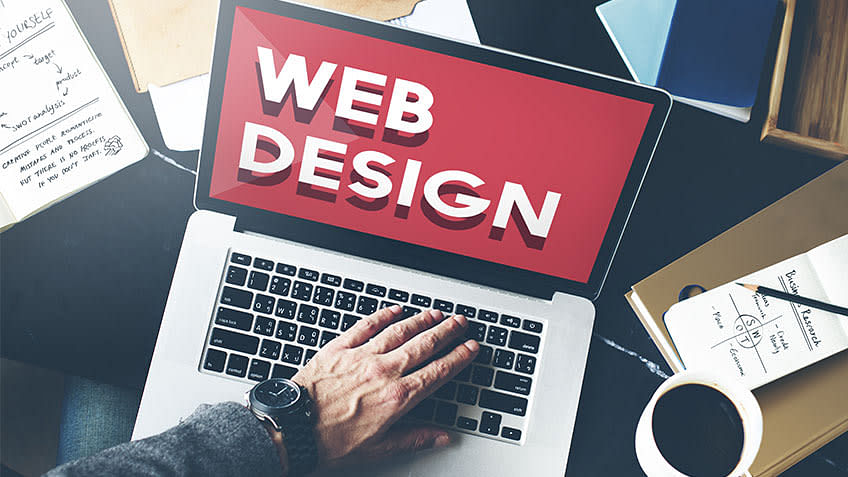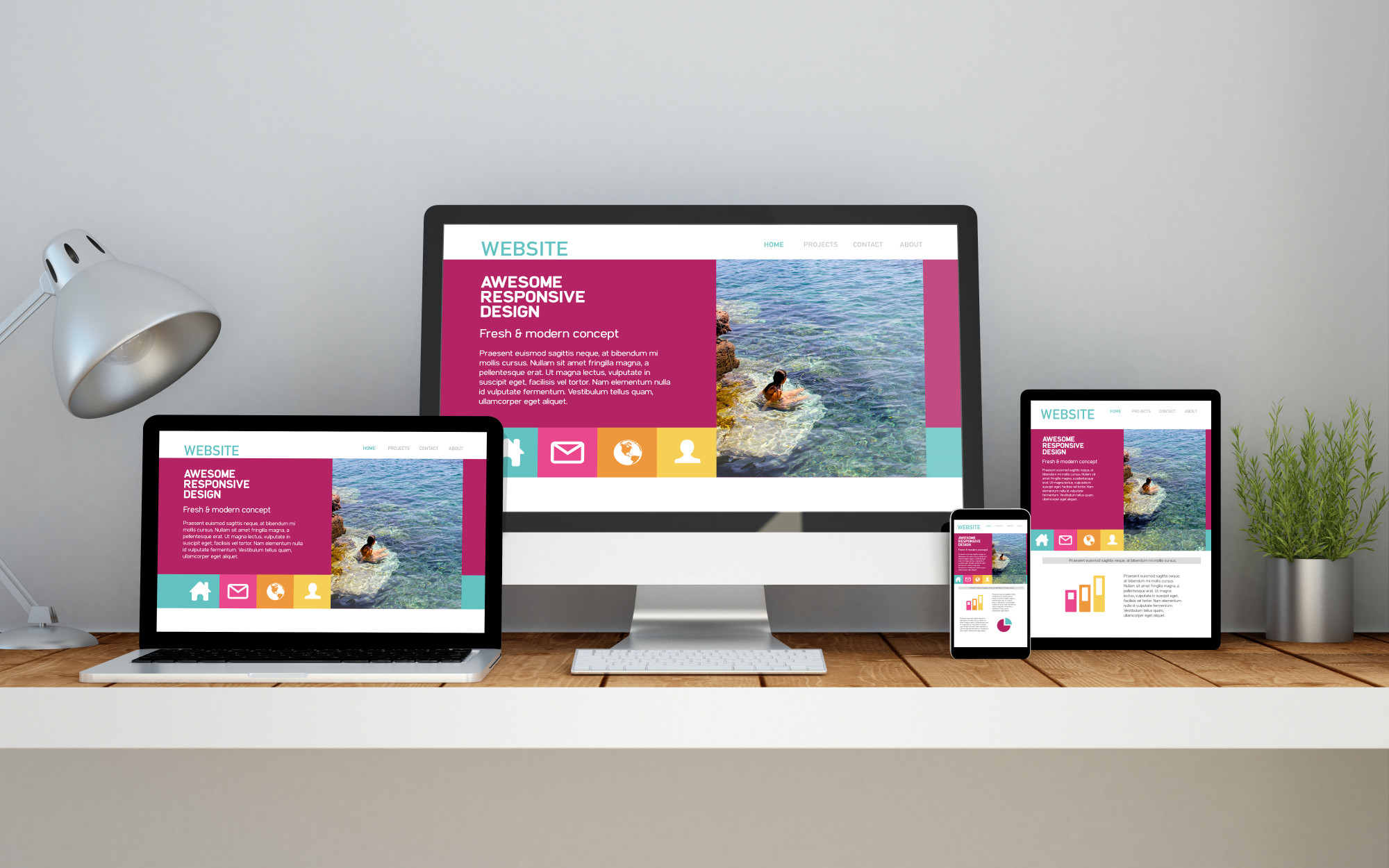The Comprehensive Overview to Crafting Visually Appealing and Useful Internet Design That Satisfies User Demands
In today's electronic landscape, the value of crafting web designs that are both practical and visually enticing can not be overemphasized. By focusing on user-centered layout concepts, developers can produce experiences that not just draw in yet additionally preserve customer passion - web design.
Recognizing User-Centered Layout
At the heart of reliable website design lies the principle of user-centered design, a viewpoint that prioritizes the needs, preferences, and behaviors of users throughout the growth process. This method involves thorough research study to understand the target market, making sure that the end product reverberates with its intended customers. By integrating user responses at every phase, designers can develop interfaces that are not only aesthetically appealing yet user-friendly and additionally practical.
User-centered design stresses empathy, calling for designers to enter the customers' shoes and consider their perspectives. Methods such as user identities, journey mapping, and use testing are utilized to recognize pain factors and opportunities for improvement. This repetitive process enables continuous improvement, as designers adapt to evolving user requirements and technical innovations.
Integrating user-centered layout brings about increased individual contentment and interaction, inevitably resulting in greater conversion rates and brand commitment. It promotes a collective atmosphere where stakeholders, consisting of programmers, developers, and customers, interact to accomplish a shared vision. By putting customers at the center of the design process, organizations can create sites that not only satisfy organization purposes yet also provide satisfying and significant experiences for individuals.
Secret Concepts of Visual Style
Efficient visual style works as the foundation for producing engaging and easy to use sites. It encompasses several key principles that guide developers in crafting cosmetically pleasing and practical interfaces.
First, balance plays a vital duty in attaining visual harmony. Developers need to disperse aspects uniformly across the layout to stay clear of frustrating individuals. This can be achieved via in proportion or asymmetrical style techniques.
Following, comparison improves readability and accentuates vital aspects. By utilizing differing shapes, dimensions, or colors, designers can develop focal points that guide customers through the web content.
Furthermore, alignment is essential for arranging information. Regular positioning of message and pictures cultivates a clean layout, boosting general navigating and individual experience.
Closeness likewise adds to visual clearness. Grouping relevant products with each other aids individuals in understanding the partnership between various components, making the interface extra intuitive.
Finally, uniformity in style components, such as colors, font styles, and designs, reinforces brand name identification and helps users navigate the website extra effortlessly. By integrating these crucial principles of visual style, internet developers can create interfaces that are not just aesthetically enticing but user-centered and also practical.
Relevance of Responsive Style
Receptive layout is an important facet of modern-day web development, making sure that internet sites operate seamlessly across a range of gadgets and screen sizes. As the web landscape progresses, the variety of devicesâEUR" varying from smart devices to tablet computers and desktop computer computersâEUR" necessitates a design approach that fits all individuals.
Applying receptive layout enables an adaptable format that instantly adjusts based upon the individual's display dimensions. This versatility not only boosts accessibility but also boosts use, as users can engage my latest blog post and navigate with the site easily, despite their gadget.

Additionally, responsive design decreases the requirement for keeping numerous variations of a website, streamlining updates and content management. This effectiveness equates right into expense financial savings and a much more natural brand name experience throughout systems.
Enhancing Individual Experience
Individual experience (UX) is an essential part of internet style, affecting exactly how visitors communicate with a website and view its worth. A well-crafted UX guarantees that users can browse without effort, locate details conveniently, and accomplish check my source their objectives effectively. The design must consider the user's trip, from the minute they arrive on the site to the completion of their wanted activity, whether that be buying, signing up for a newsletter, or accessing details.
Trick aspects that enhance UX consist of clear navigating, responsive layouts, and interesting aesthetic content. Uniformity in style elements such as shades, font styles, and buttons cultivates familiarity, making the website really feel cohesive. In addition, enhancing load times is critical; individuals are less most likely to remain on a website that is sluggish to react.

Checking and Iterating Styles
Testing and iterating layouts are fundamental procedures that comply with the initial production of a web site, ensuring that the customer experience stays at the center of any type of changes. These stages entail gathering customer comments, analyzing layout performance, and making notified modifications to improve usability and interaction.
Effective screening can take various types, consisting of functionality screening, A/B testing, and individual studies. Functionality screening allows designers to observe actual users as they engage with the website, determining pain points and locations for improvement - web article source design. A/B testing, on the various other hand, contrasts two variations of a layout element to establish which performs much better, giving quantifiable information to overview decisions. Individual studies can offer qualitative insights, recording user beliefs and choices.
Once screening is completed, the version phase starts. This entails refining the layout based upon the collected information, focusing on changes that align with user requirements and service objectives. Constant version promotes a flexible style technique, where the internet site advances in feedback to customer actions and responses. By devoting to strenuous screening and version, designers can create a site that not only meets aesthetic standards yet additionally supplies a pleasurable and seamless user experience.

Final Thought
In verdict, reliable internet layout necessitates the integration of user-centered principles, essential visual style aspects, and responsive frameworks to produce appealing interfaces. By prioritizing individual requirements and carrying out constant testing and version, designers can fine-tune their developments to enhance overall complete satisfaction. The commitment to these methods not only fosters a visually enticing aesthetic yet additionally makes sure performance across diverse devices, ultimately adding to a favorable customer experience and boosted interaction.
By prioritizing user-centered design concepts, developers can produce experiences that not only bring in yet likewise keep user interest.At the heart of reliable internet style lies the concept of user-centered style, a viewpoint that focuses on the demands, choices, and habits of users throughout the growth process. By placing customers at the leading edge of the design procedure, organizations can develop internet sites that not only fulfill service objectives yet likewise provide purposeful and gratifying experiences for users.
By focusing on user demands and preferences, internet designers can develop experiences that are not only aesthetically appealing yet also practical, ultimately promoting user fulfillment and loyalty.
Individual studies can provide qualitative understandings, capturing individual views and preferences.